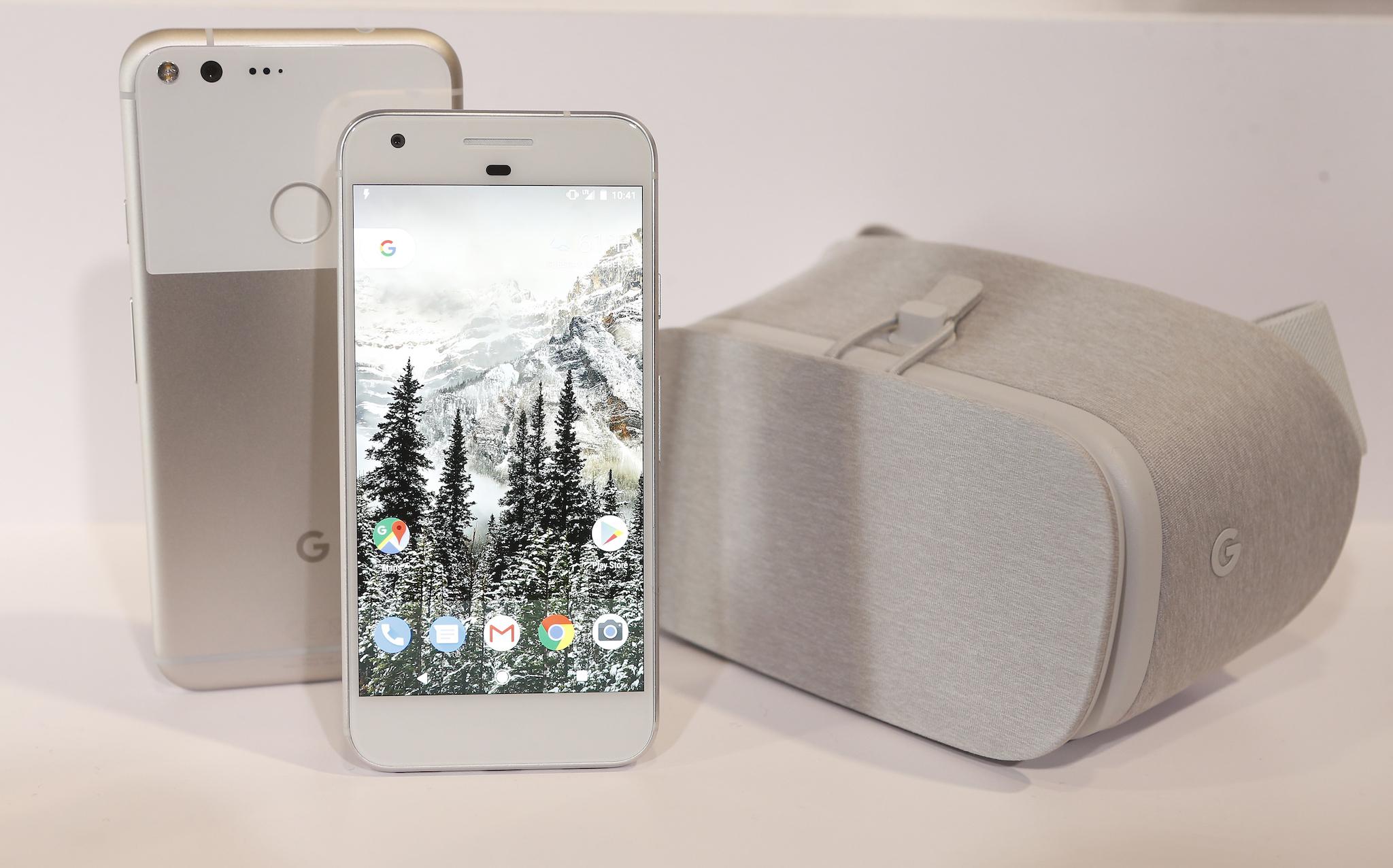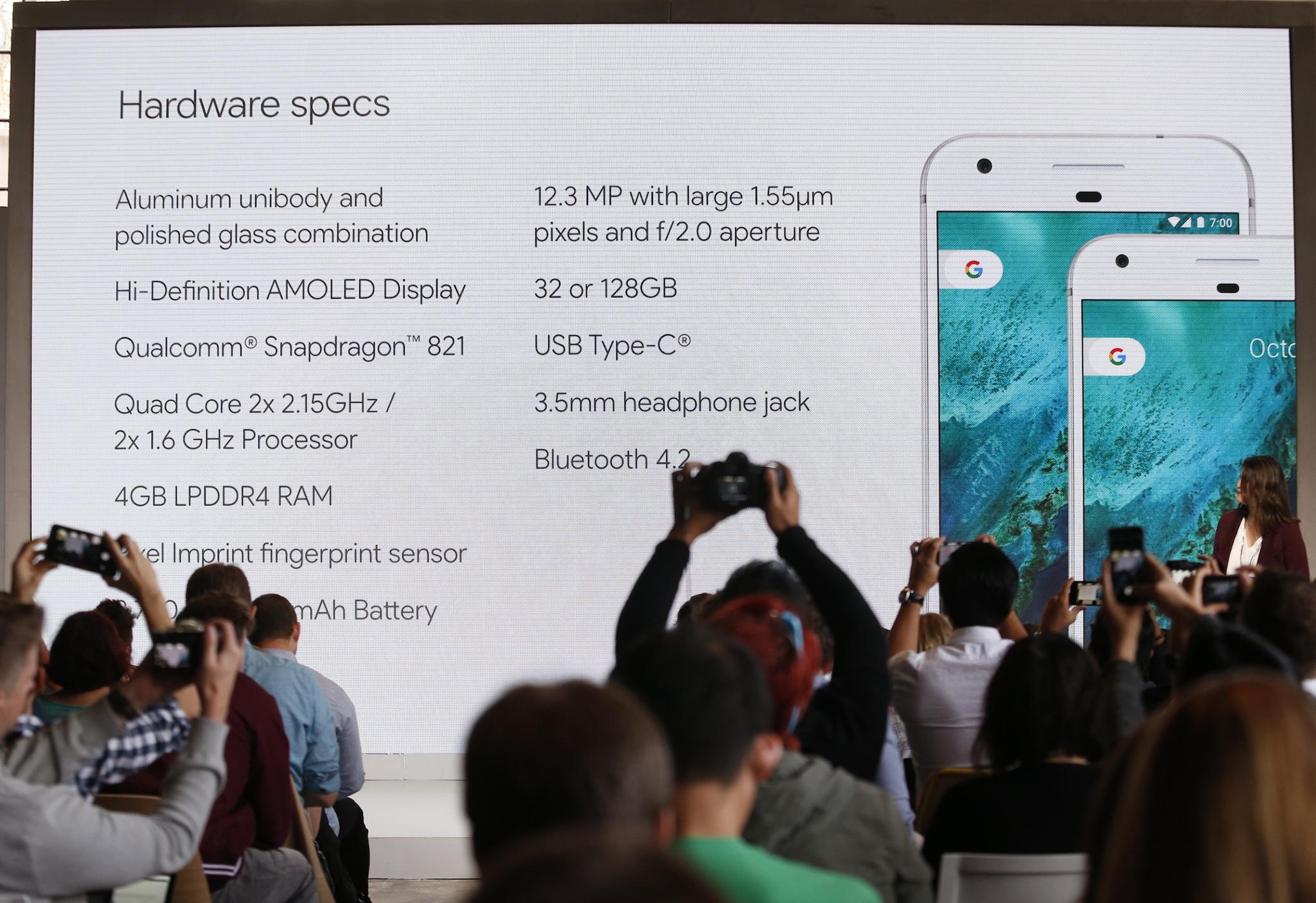Google Pixel review: Not just the best Android phone ever made, but also the future
If you want a premium Android phone, then this should be it – no questions asked. Well, maybe one question

It’s easy to say that it’s a boring time for mobile phones: every company has converged on one very similar design, a sheet of glass, metal and curved edges built around a black rectangle in the middle that shows you an increasingly stagnating operating system. And that’s true, but also not, because Samsung’s phones are blowing up on planes and literally threatening lives.
It’s into this strange market of stagnation and explosions that Google has released the first phone it had made itself. The stakes have never been higher – as well as Samsung’s worries, Apple is also seeing growth in sales of the iPhone slow – but the opportunity has never been bigger.
Google has had phones before, of course. They used to be called Nexus and were made in concert with other companies, intended mostly as a way of showing what Android could do.
They tended to be relatively low on standout features and instead used Android as their central pitch. Not only were they free of the kind of bloat that Samsung and others layered onto the operating system, they also got updates as soon as they came out – important, when other manufacturers and networks tend to stagger those updates, leaving people without exciting new features or important security changes for sometimes years.

But it’s not really the fact that the Pixel doesn’t bear another company’s name that marks it out from those previous phones. It’s the fact that it quietly marks an entirely new strategy for the company – one that could finally kickstart innovation in the phone business and bring back the idea of being excited about new handsets.
The Pixel is a very muted statement of intent from Google, and a signal of a huge change in the phone market. It also brings new features that can’t be found in any other version of Android – in particular the Google Assistant. Together, that seems to signal that Google isn’t just a huge search and ad company that also makes a phone any more; it’s on its way to being a genuinely exciting phone company that sometimes talks about its search engine.
Google Assistant
The real centrepiece of this phone is the Google Assistant. Most of the software is stock Android – it’s really the only place that you can experience that, without the kind of bloat that other manufacturers like Samsung load up on it and with updates that come to the phone as soon as they’re released – but the Google Assistant is another layer on top that makes this phone super smart.
Google Assistant is really just a smarter version of the OK Google voice search that has been built into all Android phones for years, or of Siri. But those extra smarts are so powerful that they could be the entire reason to buy this phone.

The Assistant is clever enough that you can, probably for the first time, let voice be the primary way that you interact with your device. It works for almost everything you can imagine – from a simple factual question (how tall is the Eiffel Tower) to complex discussions about where you should eat out that evening and then going through with the booking.
In the Assistant, everything that Google is great at shines through. The voice recognition is almost instant, thanks to all the work it has done on transcription; the information that it can pull is practically infinite, given that Google is the greatest store of knowledge ever known to humanity; and the complex understanding that it shows is masterful because of Google’s work in artificial intelligence.
It’s a feature that could only really ever been made by Google - and, importantly, it’s a feature that will only ever appear in Google’s phones, because it has said that the Assistant won’t be a part of Android. If you’re interested in speaking to your phone, then this is the one you need to buy - it’s just near impossible that Apple’s Siri or Samsung’s newly-acquired Viv will catch up to it any time soon.
Design
The design is unashamedly iPhone-inspired. Google threw plenty of shade at Apple during its keynote – delighting in the fact that it didn’t have the ruling camera bump that sticks out the back of the iPhone, for instance – but the product itself was a tribute to Apple’s hardware design in almost every way.
It’s one of just many things where Google has borrowed from Apple, which also includes the phone’s pricing, packaging, marketing and colours. That feels OK – Google didn’t pretend otherwise like Samsung sometimes does, and appears to have recognised that its skill isn’t in industrial design or hardware generally.
The parts of the phone that do depart from Apple’s design are a little strange, and perhaps leave you wishing that Google had borrowed even more from its rival.
The back of the handset has a strange white glass panel on it, for instance, which takes up about a third of the phone’s rear side and makes it look like a sticker has been applied to it. It has the same grey antenna lines that snake around the side and back of the phone that were found on the iPhone until the 7 came out – they are a necessity because aluminium doesn’t let phone signals through, but feel a little strange when there’s that big plate of glass in the back.
But in other important ways the Pixel leapfrogs the iPhone. The design of Android allows it not to have the home button on the bottom, for instance, and the fact that the fingerprint sensor is on the back means that it can avoid having any intrusions on the bottom of the handset at all.
All of those changes add up to a phone that looks competent and unsurprising – uninspiring, if you were being unkind, but also risk-free and drawing on design standards that have become widely-used mostly because they’re good. If you’re looking for an eye-catching look or a phone that will draw looks from passersby this won’t be the thing – but that’s not really the point in a phone anyway.
Why is Google making this phone?
That’s the question that hangs over this handset, though it’s more philosophical than one that’s of interest to a review. It’s worth asking, though, because it gets at the heart of something that you’ll ask when you get or try this handset: why is it so good?
It’s worth remembering that however good this phone is, Google makes almost the entirety of its money from ads. Almost everything that it makes feeds that business, either by encouraging people to share more data about themselves (as Android does) or by building new platforms to show ads on (as the search results page does).

This phone satisfies the former, but Google Assistant is in direct contradiction with the latter. When you’re using it, you simply don’t see marketing – its entire interface means that you never really see a web page, so there’s just no place for ads to show up.
Once, for instance, you might have searched for flights and so seen a whole host of ads pop up on your screen – Google makes money by asking companies to pay to appear there, and it helps people out as much as an ad can because they are usually for the relevant services. Now if you search for a flight then the Google Assistant will do as much as it can to help you, drawing on Google’s information but showing you answers rather than ads.
And so the only explanation for why this phone is so good and why Google has been allowed to make it is that it could signal an entire change in strategy for the world’s biggest ad company. It might stop selling ads.
Instead, it will start selling phones. And that appears to be why this phone is so amazingly, uncomplicatedly good: it’s perhaps the first ever consumer Google product meant only to make you want to buy it. It’s something akin to the point that Apple has made repeatedly – unlike most other big tech companies, it only wants you to buy things not to harvest your data, and so it’s only interest is in making products that you want to buy – and that recognition has ended in a phone that should make Apple and the iPhone worried.
Verdict
The Pixel and Pixel XL are without doubt the best phones that have ever been made to run Android. If you’re keen on Google’s operating system and want a premium phone to run it on – and it is premium, costing the same as an iPhone and positioning itself right at the top of the market – then there’s no question that this is the one.
That would be true even if Samsung’s phones weren’t blowing up. The simplicity, the purity of the operating system and the unbelievable smarts of Google Assistant mean that this is the best ; Samsung might still make better screens and more pristine designs, but it’s what’s actually on the display that counts.
The one real remaining challenger is the iPhone. And the question of which you want doesn’t really come down to which is better any more, but rather which is easier.
If you’re already in the Google or Android ecosystem, if you’re using an Android phone, and if you don’t have anything like the Apple Watch that relies on working iOS, then Android will suit you. If you like iOS, if you’re keen on the way that Macs and Apple TVs and Apple Music work with it, and if all your friends and family are on iMessage, then iOS will.
They are both perfectly adequate, and there probably aren’t specific features of either operating system that you’ll miss. (If there is, it will probably end up being added in the next release.) So it comes down to a question of allegiance and ease, or general things about the operating system: Android is slightly smarter, while iOS is smarter-looking.
If you do opt for Android, though, this is the phone you should buy. It’s not simply the purest representation of the operating system, it’s the best handset ever made to run it.
Join our commenting forum
Join thought-provoking conversations, follow other Independent readers and see their replies
Comments
Bookmark popover
Removed from bookmarks